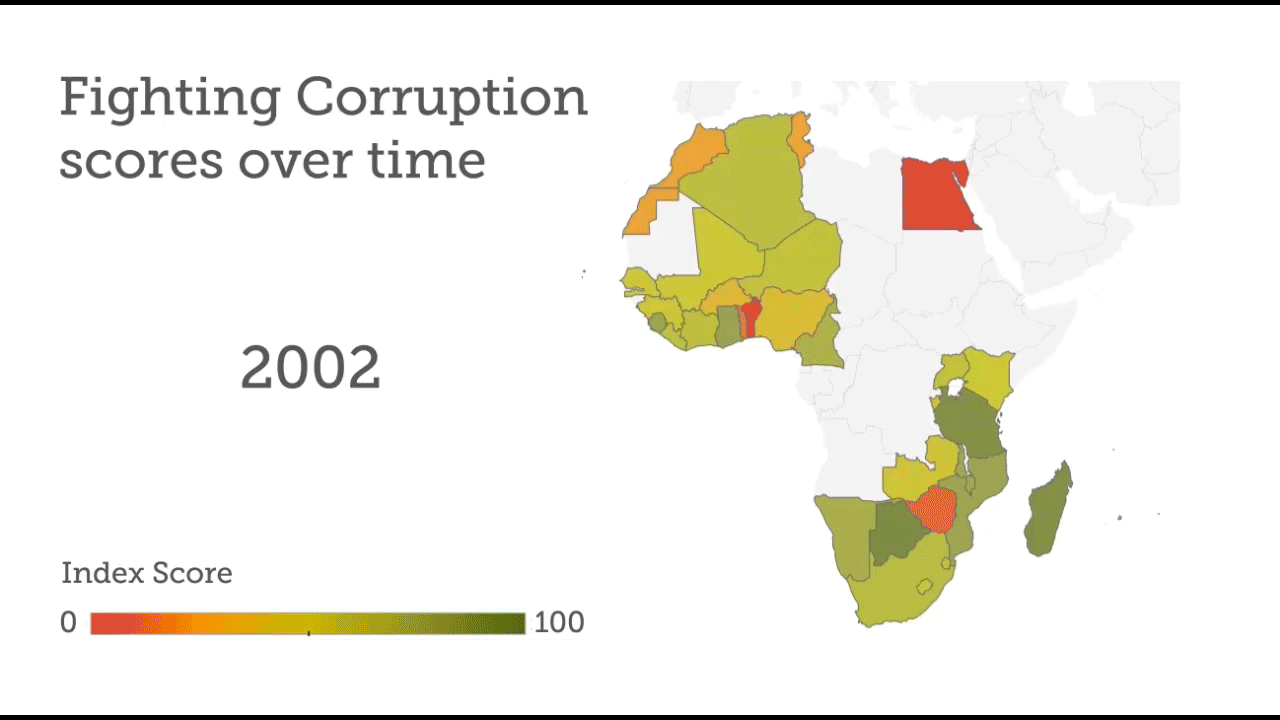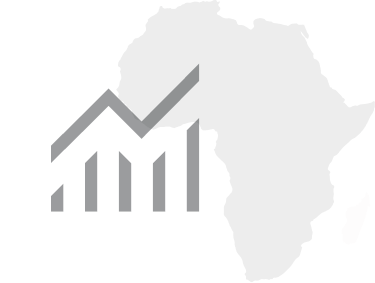Corruption – still a worrying trend
09 December, 2016
The issue of corruption cuts across all dimensions of the Index. Indicators such as Judicial Independence and Property Rights, both in the Rule of Law sub-category for example, partly assess the impact of corruption while measures in other categories such as Transparency of State-owned Companies in Sustainable Economic Opportunity touch upon the subject. Measuring aspects of corruption is however a main focus in Accountability.
The decline of the continental average score for the indicator Corruption & Bureaucracy (-8.7) is especially concerning.
Accountability shows, on average, some negative trends over the decade in the state of corruption on the continent. The decline of the continental average score for the indicator Corruption & Bureaucracy (-8.7) is especially concerning. This indicator, which is provided by the World Bank, assesses the intrusiveness of bureaucracy and the amount of red tape likely to be encountered, as well as the likelihood of encountering corrupt public officials and other groups. The African average score for this indicator is only 36.6 and in 2015 24 countries have arrived at their worst ever score. This is almost half of the continent. Thirty-three countries show deterioration over the last decade in this indicator and almost half of these (15) decline by more than -20.0 score points. Four countries score 0.0 in 2015 (Central African Republic, Equatorial Guinea, Libya and Somalia).
Other declining Accountability indicators that measure aspects of corruption highlight further concerns at the country level. In Corruption in Government & Public Officials, for example, an indicator from the Economist Intelligence Unit that assesses levels of cronyism and the degree to which public officials are involved in corrupt practices, 13 countries score 0.0 in 2015 (Angola, Burundi, Chad, Congo, Democratic Republic of Congo, Equatorial Guinea, Guinea, Guinea-Bissau, Malawi, Somalia, South Sudan, Sudan and Zimbabwe) and only 11 countries have managed to improve their score in the last ten years.
The highest scoring indicator in Accountability (at the continental level) is Public Sector Accountability & Transparency (52.2). Provided by the African Development Bank and World Bank, this indicator, which captures the extent to which the executive and public employees can be held to account by the electorate, legislative and judiciary, does show a minor average continental improvement since 2006 (+0.5) but under half (26) of countries have improved in the last ten years. All of the other indicators score below 40.0, and the majority are showing negative trends.
The 2016 IIAG includes for the first time a measure in Accountability which adds citizens’ perceptions of corruption on the continent.
The introduction of Fighting Corruption from Afrobarometer in the 2016 IIAG includes for the first time a measure in Accountability which adds citizens’ perceptions of corruption on the continent. This underlying measure of the Corruption Investigation indicator (which declines on average by -1.9 score points) assesses the extent to which the public are satisfied with how the government is handling fighting corruption in government. The African average score for this measure is only 36.3 and shows a sizeable average decline of -14.4 score points since 2006. Of the 33 countries which Afrobarometer has surveyed for this measure and for which there is a ten-year trend available, 22 have declined in the last ten years and 12 of these by more than -20.0 score points. Large declines of -40.0 points or more are seen in Madagascar (-78.1), Sierra Leone (-63.0), Ghana (-51.1), Malawi (-48.3), South Africa (-44.0), Tanzania (-42.9) and Liberia (-42.0).
Even if Afrobarometer has only surveyed 37 of 54 countries for this measure, with a ten-year trend available for only 33 of these, the average results are representative of the opinions of 73% of the continent’s population.



